
Telefonaktiebolaget LM Ericsson, commonly known as Ericsson, is a Swedish multinational networking and telecommunications company headquartered in Stockholm. The company sells infrastructure, software, and services in information and communications technology for telecommunications service providers and enterprises, including, among others, 3G, 4G, and 5G equipment, and Internet Protocol (IP) and optical transport systems. The company employs around 100,000 people and operates in more than 180 countries. Ericsson has over 57,000 granted patents.
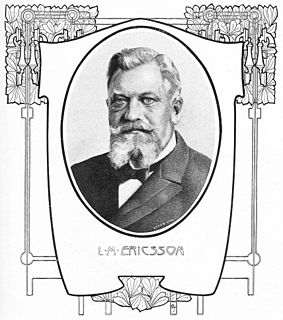
Lars Magnus Ericsson was a Swedish inventor, entrepreneur and founder of telephone equipment manufacturer Ericsson.
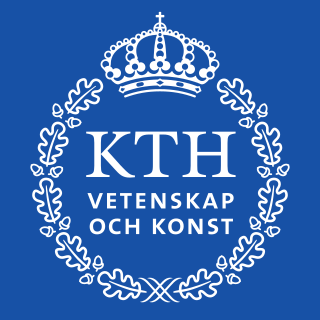
KTH Royal Institute of Technology, abbreviated KTH, is a public research university in Stockholm, Sweden. KTH conducts research and education within engineering and technology, and is Sweden's largest technical university. Currently, KTH consists of five schools with four campuses in and around Stockholm.
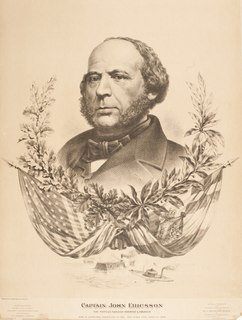
John Ericsson was a Swedish-American inventor. He was active in England and the United States.
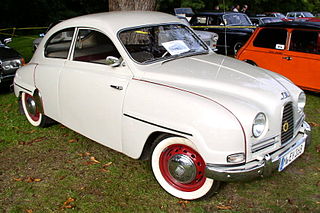
The Saab 93 is the second production automobile that was manufactured by Saab. Styled by Sixten Sason, it was first presented on December 1, 1955. The 93 was powered by a longitudinally-mounted three-cylinder 748 cc Saab two-stroke engine giving 33 hp (25 kW). The gearbox had three gears, the first unsynchronised. In order to overcome the problems of oil starvation on overrun for the two-stroke engine, a freewheel device was fitted. In 1957, two-point seatbelts were introduced as an option. The 93 was the first Saab to be exported from Sweden, with most exports going to the United States. A Saxomat clutch and a cabrio coach were available as options.
An ignition system generates a spark or heats an electrode to a high temperature to ignite a fuel-air mixture in spark ignition internal combustion engines, oil-fired and gas-fired boilers, rocket engines, etc. The widest application for spark ignition internal combustion engines is in petrol (gasoline) road vehicles such as cars and motorcycles.

NMT is the first fully automatic cellular phone system. It was specified by Nordic telecommunications administrations (PTTs) and opened for service on 1 October 1981 as a response to the increasing congestion and heavy requirements of the manual mobile phone networks: ARP (150 MHz) in Finland, MTD (450 MHz) in Sweden and Denmark, and OLT in Norway.
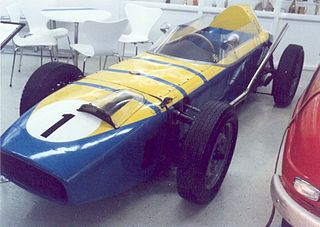
The Saab Formula Junior was a car built in 1960 by the Swedish car maker Saab.

Coventry Climax was a British forklift truck, fire pump, racing, and other specialty engine manufacturer.

Fordson was a brand name of tractors and trucks. It was used on a range of mass-produced general-purpose tractors manufactured by Henry Ford & Son Inc from 1917 to 1920, by Ford Motor Company (U.S.) and Ford Motor Company Ltd (U.K.) from 1920 to 1928, and by Ford Motor Company Ltd (U.K.) from 1929 to 1964. The latter also later built trucks and vans under the Fordson brand.

The Ford Model T used a 177 cu in (2.9 L) sidevalve, reverse-flow cylinder head inline 4-cylinder engine. It was primarily a gasoline engine. It produced 20 hp (14.9 kW) for a top speed of 45 mph (72 km/h). It was built in-unit with the Model T's novel transmission, sharing the same lubricating oil.
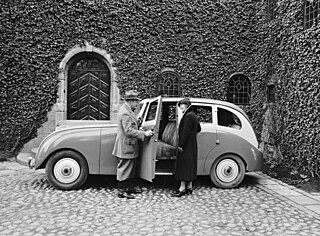
The Volvo Venus Bilo was a concept car, which was revealed by Volvo Cars sometime in 1933. It was a streamlined design with rear hinged doors and conventional doors in the side to access the engine bay. It was designed to have one such great loading capacity.

Skellefteå AIK is a Swedish professional ice hockey (SHL) club from Skellefteå, Sweden. The SHL is the highest level of ice hockey in Sweden. They play their games in Skellefteå Kraft Arena, which seats 6,001 spectators. The team has won the Swedish Championship three times – in 1978, 2013, and 2014. They reached the SHL championship finals six years in a row between 2011–2016, tying Färjestad BK's streak between 2001–2006, winning two times.

Alfaskop was a brand, developed in Sweden by Standard Radio & Telefon AB (SRT) and applied to data terminals and later IBM-compatible PCs. The term was also used to name Alfaskop AB, a listed Swedish IT services company., that filed for bankruptcy in 2001.

Fredrik Ljungström was a Swedish engineer, technical designer, and industrialist.

The Chevrolet Series C Classic Six is the first automobile produced by American car manufacturer Chevrolet. It is one of the few Chevrolets made while record-setting Buick race car driver Louis Chevrolet was with the company. This Brass Era Chevy was much larger, more powerful, more stylized and therefore more expensive than the cars that would ultimately replace it. Louis Chevrolet loved it, but William Durant had a cheaper car in mind.

Carl Richard Nyberg was a Swedish inventor and industrialist. Nyberg was a pioneer in mechanical engineering. He received a patent for a blow lamp and was an aviation pioneer.
Comviq is since 2009 a Swedish prepaid and postpaid mobile phone flanker brand, fully owned by Tele2. The original Comvik operation is the predecessor to two listed companies: Tele2 and Millicom.
















